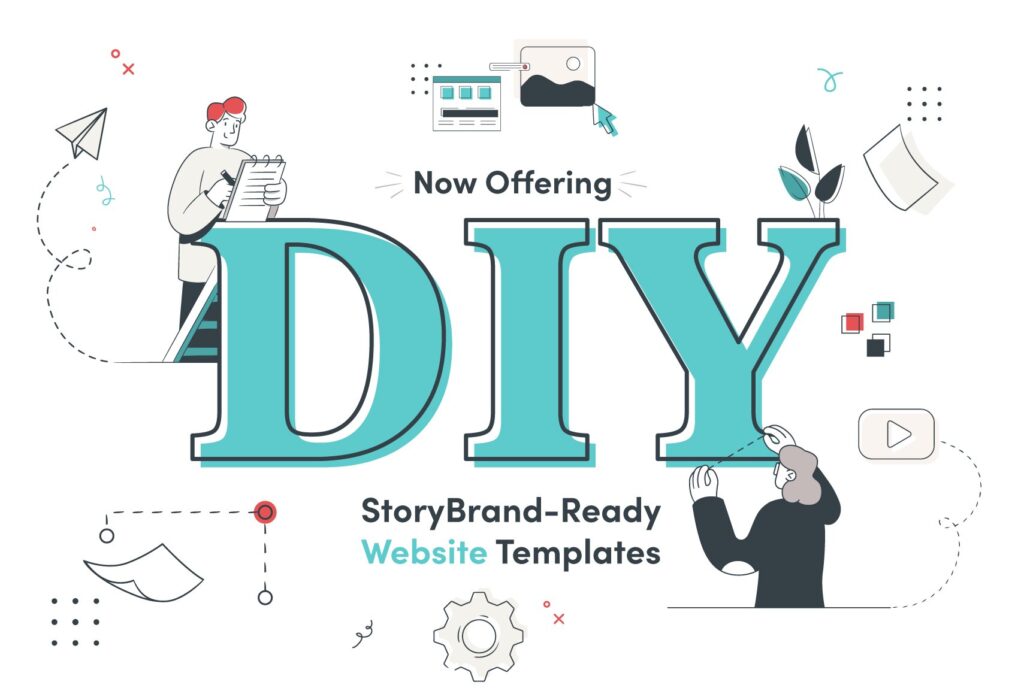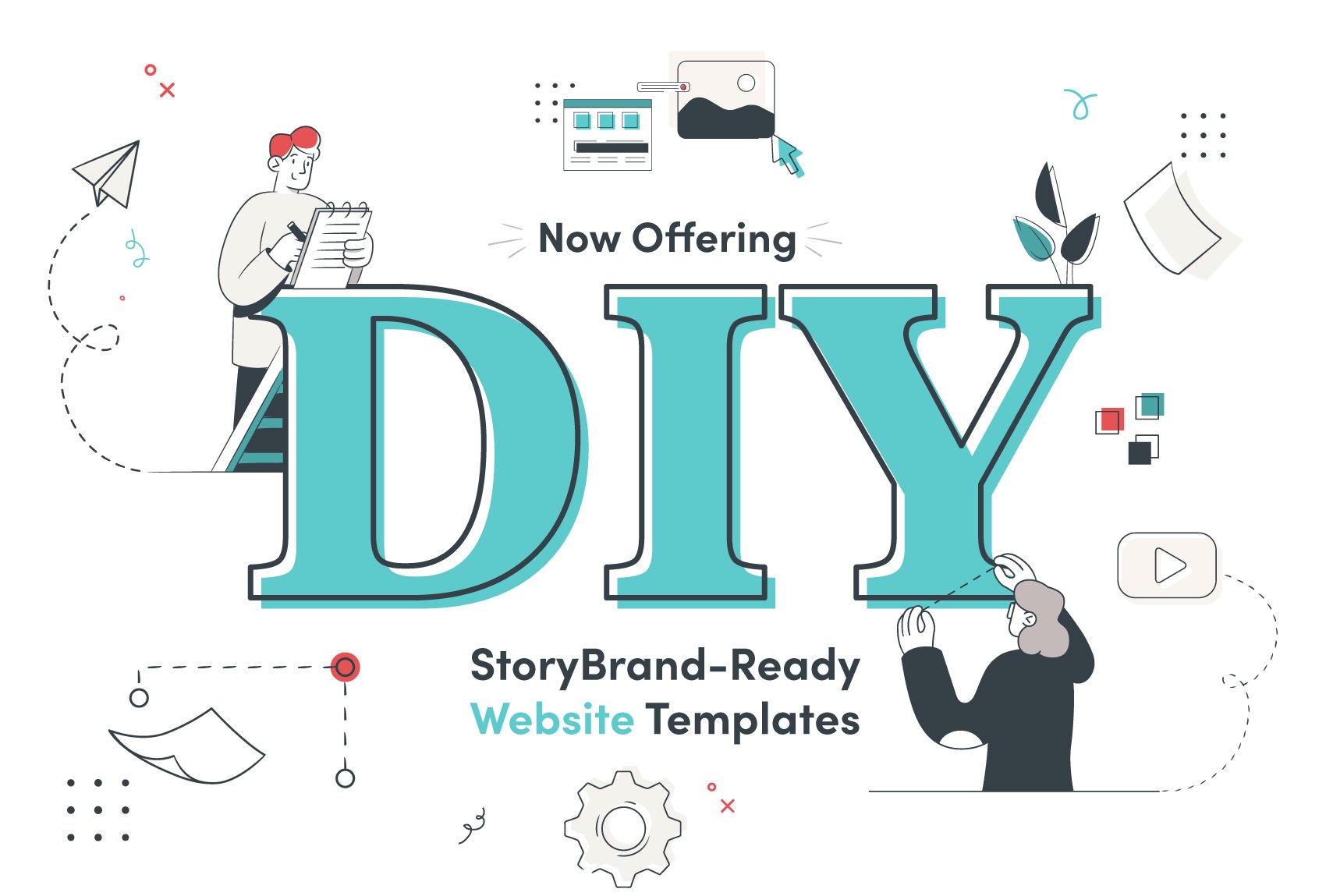
The Ultimate Guide to DIY Website Creation: Empowering Your Online Presence
In today’s digital age, a strong online presence is crucial for businesses and individuals alike. A website serves as a digital storefront, a portfolio, and a communication hub, all rolled into one. While professional web design services offer expertise and tailored solutions, the rise of user-friendly platforms has made DIY website creation a viable and increasingly popular option. This guide provides a comprehensive overview of the DIY website landscape, empowering you to build your own website from scratch without requiring extensive coding knowledge.
Why Choose a DIY Website?
Several compelling reasons drive individuals and businesses to opt for a DIY website approach:
- Cost-Effectiveness: DIY website builders are generally more affordable than hiring a professional web designer. Many platforms offer free plans or low-cost subscription options, making them accessible to startups and individuals on a budget.
- Control and Flexibility: You have complete control over the design, content, and functionality of your website. This allows you to tailor it precisely to your needs and preferences.
- Speed and Agility: You can launch your website much faster than waiting for a web designer to complete the project. You can make changes and updates in real-time, adapting to evolving needs.
- Learning and Skill Development: Creating a DIY website is a valuable learning experience. You’ll gain insights into web design principles, content management, and online marketing.
Choosing the Right DIY Website Builder
Numerous DIY website builders are available, each with its own strengths and weaknesses. Selecting the right platform is crucial for a successful website creation process. Consider the following factors:
- Ease of Use: Opt for a platform with a user-friendly interface and drag-and-drop functionality. This will allow you to build your website without coding.
- Templates and Design Options: Look for a platform with a wide selection of professionally designed templates that are customizable to your brand.
- Features and Functionality: Ensure the platform offers the features you need, such as e-commerce integration, blogging tools, contact forms, and SEO optimization.
- Pricing and Plans: Compare the pricing plans of different platforms and choose one that fits your budget and needs.
- Customer Support: Check the availability and quality of customer support in case you need assistance during the website creation process.
Popular DIY website builders include:
- Wix: Known for its user-friendly interface and extensive template library.
- Squarespace: Renowned for its sleek designs and all-in-one platform.
- Weebly: A simple and affordable option for basic websites.
- WordPress.com: A hosted version of the popular WordPress platform, offering a balance of flexibility and ease of use. (Note: This is different from WordPress.org, which requires self-hosting.)
Step-by-Step Guide to Building Your DIY Website
Once you’ve chosen a DIY website builder, follow these steps to create your website:
- Sign Up and Choose a Plan: Create an account and select a pricing plan that suits your needs.
- Select a Template: Browse the template library and choose a design that aligns with your brand and website’s purpose.
- Customize Your Template: Modify the template to reflect your brand identity. Change colors, fonts, and images to create a unique look.
- Add Content: Populate your website with relevant and engaging content. Write compelling copy, upload high-quality images, and create informative videos.
- Optimize for SEO: Implement basic SEO techniques to improve your website’s visibility in search engine results. Use relevant keywords, optimize image alt text, and create a sitemap. [See also: SEO for Beginners]
- Connect Your Domain: Purchase a domain name and connect it to your website. This will give your website a professional and memorable address.
- Test and Publish: Thoroughly test your website on different devices and browsers before publishing it. Once you’re satisfied, hit the publish button and make your website live.
Essential Elements of a Successful DIY Website
Creating a visually appealing website is only half the battle. To truly succeed, your DIY website must also be functional, user-friendly, and optimized for search engines. Consider these essential elements:
- Clear Navigation: Make it easy for visitors to find what they’re looking for. Use a clear and intuitive navigation menu.
- Mobile Responsiveness: Ensure your website is mobile-friendly. A significant portion of web traffic comes from mobile devices, so your website must be optimized for smaller screens.
- Fast Loading Speed: Optimize your website for speed. Slow-loading websites can frustrate visitors and negatively impact your search engine ranking.
- Compelling Content: Create high-quality, engaging content that provides value to your visitors. Use clear and concise language, and break up large blocks of text with images and videos.
- Call to Action: Guide visitors to take the desired action, such as contacting you, subscribing to your newsletter, or making a purchase. Use clear and prominent call-to-action buttons.
- Security: Protect your website from security threats. Use a strong password, install security plugins, and keep your software up to date.
DIY Website SEO Tips
Search engine optimization (SEO) is crucial for driving traffic to your DIY website. Implement these tips to improve your website’s search engine ranking:
- Keyword Research: Identify the keywords that your target audience is using to search for your products or services. Use these keywords throughout your website content.
- On-Page Optimization: Optimize your website’s title tags, meta descriptions, and header tags with relevant keywords.
- Content Marketing: Create valuable and informative content that attracts and engages your target audience. [See also: Content Marketing Strategy]
- Link Building: Build high-quality backlinks from other websites to improve your website’s authority.
- Mobile Optimization: Ensure your website is mobile-friendly, as mobile-friendliness is a ranking factor.
- Site Speed Optimization: Improve your website’s loading speed, as site speed is also a ranking factor.
Common Mistakes to Avoid When Building a DIY Website
While DIY website creation offers numerous benefits, it’s important to avoid common mistakes that can hinder your website’s success:
- Poor Design: Avoid cluttered layouts, inconsistent branding, and low-quality images.
- Lack of Mobile Optimization: Neglecting mobile optimization can alienate a large portion of your audience.
- Slow Loading Speed: Slow-loading websites can frustrate visitors and negatively impact your search engine ranking.
- Poor Content: Low-quality, unoriginal content can damage your website’s credibility.
- Ignoring SEO: Neglecting SEO can limit your website’s visibility in search engine results.
- Lack of Security: Failing to protect your website from security threats can compromise your data and reputation.
The Future of DIY Website Creation
The DIY website landscape is constantly evolving, with new platforms and features emerging regularly. As technology advances, DIY website builders are becoming even more user-friendly and powerful, empowering individuals and businesses to create professional-looking websites without requiring extensive technical skills. Expect to see further advancements in artificial intelligence (AI) and machine learning (ML) being integrated into DIY website builders, allowing for more personalized and automated website creation experiences. [See also: AI in Web Design]
Conclusion: Empowering Your Online Journey with a DIY Website
Creating a DIY website is an empowering experience that allows you to take control of your online presence. By choosing the right platform, following best practices, and continuously optimizing your website, you can create a professional-looking and effective website that achieves your goals. Whether you’re a small business owner, a freelancer, or an individual looking to showcase your work, a DIY website can be a valuable asset in today’s digital world. Embrace the opportunity to build your own online space and unlock the potential of the internet.

